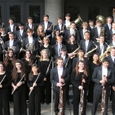Each year top ensembles from around the country and the world travel to Chicago to perform at the Midwest Clinic. We chatted with three of these directors to gain insight into their programs and their preparations.
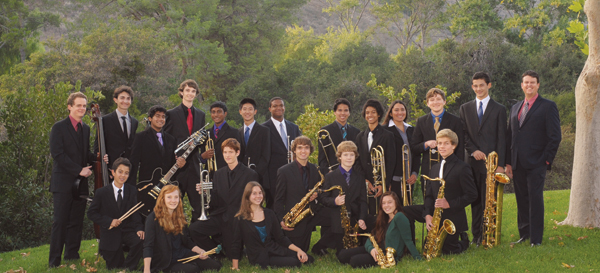
Westlake High School
Studio Jazz Ensemble I
Westlake Village, California
Brian Peter
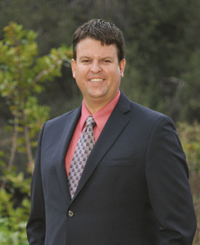 When deciding to apply for this year’s Midwest Clinic, Brian Peter remembered the inspiration from past conventions. “I have attended since 2003 and it has been a major influence on my teaching. I get back home with two weeks left of vacation and am chomping at the bit to get back into class to try out new ideas. This is the third time I have applied with the jazz band. Just rehearsing and recording the group for the Midwest application is an important educational tool. It forces students listen to themselves and be critical of themselves.”
When deciding to apply for this year’s Midwest Clinic, Brian Peter remembered the inspiration from past conventions. “I have attended since 2003 and it has been a major influence on my teaching. I get back home with two weeks left of vacation and am chomping at the bit to get back into class to try out new ideas. This is the third time I have applied with the jazz band. Just rehearsing and recording the group for the Midwest application is an important educational tool. It forces students listen to themselves and be critical of themselves.”
The program at Westlake High School has three big bands and a jazz combo program. Because of the school’s location in Southern California, Peter has had an easier time than many at recruiting outstanding guest artists and composers for the Midwest. He even counts noted jazz composer and bandleader Gordon Goodwin as one of his band parents. “His wife is our booster president. We asked him to write a piece specifically for well-known flutist Jim Walker, who teaches at USC and has played on just about every movie soundtrack you can imagine.” Walker will perform with the group in Chicago.
He is also excited about a piece composed for the band by New York composer Mike Kamus. “He has been writing great grade 3 music; we just love his stuff. I told him that more people need to know about his music, and he wrote us a great swing tune. For all the commissions I asked for grade 3 music. I didn’t want grade 5 and 6. I really wanted these great composers to write for advanced middle school and for average high school groups. Composers like Gordon Goodwin do not write for grade 3 very often, but when they do, it is phenomenal. I have always loved hearing great music at every level at Midwest, and I wanted to continue that tradition.”
Peter says that he and his students spend considerable time talking about how to tell a story through improvisation. “Listen to some of the old Miles Davis tracks. The melodies are so simple but are still studied today. If you looked at the solo on a piece of paper it would not look difficult at first glance. Sometimes students will play a solo and the rest of the band will react. We talk about what they did to get that response and how to recreate that emotion in the future.”
Peter notes that one challenge this fall has been making sure student interest in the music does not flag. “Normally, we read about 150 tunes a year, and will perform 50 or more tunes a year. We constantly work on new music. Because we are spending more time than usual on 10 tunes, I have to make sure students don’t get bored. We read so much because that is the real world. We do that in the concert groups and with the young bands. I want to teach students to have a good idea how to play a piece before they even play a note. We throw as much as we can out there. At some point soon, I am going to take a couple of days and put our Midwest music aside to sightread 15-20 tunes.”
New Trier High School
Symphonic Wind Ensemble
Winnetka, Illinois
Matthew Temple
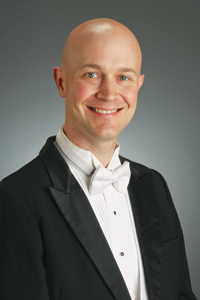 Although groups from New Trier have made many trips to the Midwest in the past, director Matthew Temple is thrilled to take a group to the clinic for the first time. He is particularly looking forward to showcasing some up-and-coming talent in the music world. “At Midwest you can take one of two approaches: you either go with old standbys that everyone knows or you can introduce something new and fresh. That is the direction we went.”
Although groups from New Trier have made many trips to the Midwest in the past, director Matthew Temple is thrilled to take a group to the clinic for the first time. He is particularly looking forward to showcasing some up-and-coming talent in the music world. “At Midwest you can take one of two approaches: you either go with old standbys that everyone knows or you can introduce something new and fresh. That is the direction we went.”
One highlight will be a performance by the Chicago-based Axiom Brass quintet. Temple describes the group as “part of the new, hip generation that un-derstands the importance of tecnology in promoting their music. They have produced incredible results in competitions.”
Temple is also excited to play a commission by Michael Markowski called Dreamland. Temple marvels that Markowski is only in his mid-20s but has a fresh, original voice. “He originally went to college as a film studies major and then when he graduated he was successful with some side composition projects. It became his true calling.”
As with all Midwest performers, this advanced high school wind ensemble will also perform some easier works. In selecting easier works, Temple told students to imagine they were back in fifth grade with the initial excitement of playing an unfamiliar instrument. “I wanted them to tap those early memories of playing and decide whether the piece would get them excited about playing. We found several easy pieces that younger students would really like that are also good music.”
One of Temple’s favorite Midwest memories was hearing Francis McBeth on a panel discussion. Temple commented that sometimes famous people can be less impressive in person, but McBeth did not disappoint. “I had played a lot of his music growing up and liked him as a composer. I remember that he was incredibly funny and articulate. He exceeded my expectations as someone who was both a great composer and a great person. He talked about how a lot of the new music sounds the same, and he coined the phrase ‘K-mart Grainger’ to describe these pieces. I wrote about ten or twelve comments that he made that caught me off guard. Because he passed away this year, a number of bands will be playing his music at Midwest in tribute.”
Asked for his advice for other directors, Temple says, “the one thing I fear about our profession is sterile music where musician play so in tune and so well rhythmically that they are not really making music. At New Trier, one of the most important lessons we teach is that all music is going to, from, or at somewhere. If it is not going somewhere, it is static. In music you are always crescendoing or decrescendoing. Music is growing, moving, and transforming. I learned a great deal from the conducting of Harry Begian because his bands were always so musical. He demanded a lot of respect and attention, but his groups played with great emotion. Mallory Thompson has a similar approach and will say, ‘make interesting note shapes.’ In other words if you have a whole note, you don’t just play mezzo forte from beginning to end. You listen to the rest of the band and figure how to support what is going on. That is the whole point of making music.”
Edmond North H.S. Symphony
Edmond, Oklahoma
Peter Markes
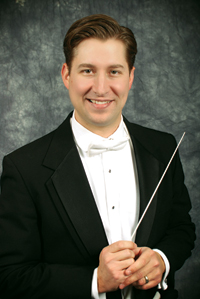 Peter Markes will bring more than 90 musicians to the Midwest, even though the accepted ensemble only has about 30 members. Markes felt the invitation was important enough for his entire program to share the accomplishment, even younger students who will not perform.
Peter Markes will bring more than 90 musicians to the Midwest, even though the accepted ensemble only has about 30 members. Markes felt the invitation was important enough for his entire program to share the accomplishment, even younger students who will not perform.
Markes has emphasized that the group has a duty to represent both the composers performed on the concert and the entire state of Oklahoma. “Most of the audience will hear these pieces for the first time at the Midwest. I want them to love the music and go buy it in the exhibitor hall because of how we performed it. We also want to put Oklahoma on the map as a strong place for orchestra.”
Also traveling to perform with the group is Kyle Dillingham, who has been called Oklahoma’s musical ambassador. He is in his mid-30s and is a phenomenal improv violinist of all styles. He embraces Irish fiddle, gypsy, and even Middle Eastern and North African music. He is playing an arrangement of the famous Dark Eyes melody. The arrangement is just the students following a chord chart and changing rhythms, very much like the gypsy culture. The music is not written down; they play the chart and listen.”
In preparing for the convention, Markes has heard cautionary tales from mentors about selecting and preparing the easier works with great care. “All fall, I used those pieces as warmup in every rehearsal. Our grade 1 piece is a beautiful fantasy on “Ode to Joy” called Beethoven Lullaby by Brian Balmages. It is just gorgeous. We use that instead of tone and bow control exercises out of a method book. The students have rehearsed the piece without a conductor and will perform it that way at Midwest. It really forces them to communicate with each other, which can be hard to do when you have so much brain power devoted to getting the notes right.”
The group has had some interesting experiments with orchestra seating this fall. Markes seats the first violins in their traditional spot and the second violins opposite them so they are both on the outside. “At first the result was abysmal. They players couldn’t communicate at all. I put the second violins back in the traditional spot just for a month, just to make everyone more comfortable, and then I pulled them back over to the new spot. Over time, this approach to seating has worked out well.”
Now in his 11th year at Edmond North High School, he says that the most important lesson he has learned is: Be organized and be patient. The former begets the latter. Once I became a better manager, I had the patience to become a better leader. This was not just getting organized with my desk and my computer, but organized with my goals for the future.”
Sampling the Clinics
One of the highlights of the Midwest Clinic each year is the wide variety of clinics to attend. Enjoy these sneak preview tips from just a few of the many clinicians.
Teaching Jazz in Elementary Schools
Diane Ellis
Wednesday, 10:30
Set the tone for the elementary jazz band rehearsal. Have your rhythm section students start a one-chord rhythmic groove or a blues for the students to play or freelance on until everyone is in place for rehearsal. When your rhythm section lays down a groove as students prepare for the rehearsal, this gives students a chance to practice improvisational skills with themselves or with their classmates before rehearsal begins. This also helps shy or inhibited players who can learn by engaging with their fellow students while lots of other sounds are going on. Having time to improvise before rehearsal gets students in a good frame of mind and loosens them up if they had a difficult day in school. When they come in the band room it is their musical moment to enjoy until rehearsal starts.
Building a Better Percussionist
Rob Sanderl
Wednesday, 10:30
When teaching young percussionists we often get bogged down in notation, trying to explain a wildly foreign language to a ten- or eleven-year-old. Instead, focus on teaching fundamental techniques and movements that are critical to success on the instrument. Start by teaching students a variety of movement patterns on the bell set. For example, play a full measure of eighth notes on each note of the C scale. Then play the C scale with only 4 eighth notes per scale degree, and then 2, and then 1. We are moving from vertical to more lateral motions, thus making the pattern more challenging each time. At no point have I mentioned notation, this is all by rote, so students can focus on movement and technique as well as ear training. Once everyone feels comfortable with these ideas then I will tell them, “This is what we call a C major scale, and it looks like this.” Now that the students can successfully play the scale using these movements and variations, it gives the notation (visual representation of the scale) context.
Audio for Music Educators
Steve Treager
Wednesday, 11:50
As an audio professional and educator, I am often asked how to record, edit, mix, or set up and run sound reinforcement for ensembles. Because most music educators have an inadequate budget and limited audio experience, my answer usually includes a single principle: Simple is probably best. When recording, one of three stereo miking techniques usually produces an accurate representation of the event, while for editing, I recommend one of the free computer-based audio editors. For the live mix, two primary suggestions seem to help the most. First, use as few microphones as possible because more mics add to the possibility of problems, and second, employ proper microphone technique; this prevents some of those problems. In this presentation, I will discuss my philosophy of recording, editing, mixing, and stereo miking techniques, as well as offer concepts and approaches when simple is inadequate.
What I Wish I’d Known
Jager Loyde
Wednesday, 1:10
An aspect of teaching that we seem to take for granted but is vital to a successful music program is our knowledge and understanding of our students. The students of today are not the students of our past. Prospective directors should research beyond the school’s mission statement and past reputation to determine if they are a proper fit for that school community. Directors must understand community dynamics, the intended direction or vision of the school district, and the value of the arts in the community. Without a point of departure, it will be difficult for directors to create a realistic goal for their program. It can be very frustrating for young directors especially when their musical ambitions for their program are not realized immediately. There is a process required to reach our goals and it begins with our students. Students must understand the goal to be reached and their point of departure to gain perspective. We have the opportunity to reach our desired goals if we know and understand our students and their immediate community.
Supercharge Your Brass Players
Frank Gabriel Campos
Thursday, 9:30
The most effective exercise to improve overall wind performance that I have encountered is called timed panting. Sitting or standing holding your instrument as if playing, pant through the nose by sniffing rapidly in and out for as long as you can without stopping. Four to six in-and-out sniffs per second is the ideal rate. Many students will not be able to do this for more than five seconds the first time they try it. For the next few weeks, get in at least one session of panting each day, preferably right before playing the instrument. Aim for 30 seconds of nearly continuous panting. When you can do that, go for a minute, then two or even three minutes after many weeks. If you are working with students, let everyone know to stop panting and put the instrument in the lap at the first sign of dizziness, and let the students with asthma or illness sit this out. When we nose pant, the body gradually learns to adopt the best, most efficient posture to breathe. Try playing a big passage with your ensemble, then have them pant for fifteen seconds, then play the passage again and note the difference in sound.
Getting Students on the Right Instruments from the Beginning
Erin Cole
Thursday, 9:30
There are many factors that go into initial success on an instrument, including facial structure, physical limitations, height, and arm length. After trying a student on different instruments and taking all of those things into consideration, you also want to make sure the instrument selected is one the student is excited about and will want to practice. There is a balance that band directors should take time to find. Be convincing about the instrument that you feel will be best suited for a student. Make sure the students and parents understand why one instrument is the best choice. If you take the time to do this correctly in the beginning there will be fewer problems down the road. When I try students on instruments, I have the parents there for the process to see and hear their child try the different instrument options.
Coaching Your Jazz Band Rhythm Section Is Easier than You Think
Jim Widner
Thursday, 11:10
Just knowing how to connect the dots with each instrument in the rhythm section can make a world of difference. As a bass player, I first of all like to make sure that I have a connection with the drummer. The key here is to get the drummer’s quarter note pulse on the ride cymbal on the same page as the bass player. The only difference here is that the drummer can augment the rhythm pattern, but with the emphasis still locked in with the quarter note. The guitar player can also cement this feel by comping the quarter note feel. This frees up the piano player to play fills or to comp a different pattern than the guitar player. One of the key ingredients comes back to the quarter note length from the bass player. This can also set the style of how your band will play a swing chart. Other styles will also be covered in this session.
Ali Ryerson’s Jazz Practice Method
Ali Ryerson
Thursday, 3:00
Here is a great way to learn and practice the diminished scale. Within one octave, a series of minor thirds will produce two conjunct diminished triads, joined at the tritone (a C diminished triad and a Gb diminished triad). If we build the two five-note scales which correspond to these two diminished triads and then join the scales at the tritone, the diminished scale is formed. To start, play the first five notes of a major scale, root to fifth, ascending and descending. Lower the third to form the five-note scale of a minor triad; then lower the fifth to form the five-note scale of a diminished triad. Repeat this three-step process beginning at the tritone. By joining the two diminished groups together, it forms the eight-note whole-step/half-step diminished scale pattern, the scale that corresponds to the diminished chord.
The Joy in a Lifetime of Teaching
John Miller
Thursday, 3:00
Even if you are the only music teacher on the school’s payroll you can put together a staff of experts that can not only help you develop or maintain your programs but will also help to en-sure your longevity in the profession. Delegation, long-term planning and using effective leadership skills can be the difference in the length of your career. Understanding the dynamics of your group, including forming, storming, norming, and performing, can go along way to keep you on the podium until the music fades away.
I Know Sousa, Not Sopranos: A Workshop for Band Directors Teaching Choir
Russell Robinson
Friday, 8:30
As a trained band director who has been in choral music for more than 30 years, I have a unique perspective on the skills that band directors already have, many that choral directors should have as well, and what is necessary to develop high-quality choirs. Band directors typically have better organizational skills and conducting technique than most choral directors. What they need is knowledge in selecting good repertoire that is appropriate for the ensembles, how to teach correct vowel production, and treatment of text. Text is one of the main reasons I fell in love with choral music. In bands, we must analyze to determine the phrasing, but in choral music the phrasing is explicitly in the text.
Five Amazingly Fast Lessons
to Teach our Musical Systems
Jerry Henry
Friday, 12:45
I was taught that a quarter note is one beat long, that a half note is two beats, and that an eighth note is half a beat. Not only is the math fuzzy, but it only works in very specific musical circumstances. Instead, teach rhythm relationally. To do this start with a whole note. Whatever speed a whole note is, a half note is twice as fast, or two half notes will equal a whole note. This is math students will understand. Whatever speed a half note is, quarter notes will be twice as fast, or two quarter notes will equal a half note, and this continues down the line. To practice the concept create a pulse but don’t name it. Have students play four notes, one per pulse, then play twice as fast for four pulses. Move back and forth across the pulse playing the pulse, playing twice as fast, or playing notes that are two pulses long. Change the speed of the pulse and do the same drills. When students can do this with ease, you can label the pulse whatever you like and ask students to play the named notes that are twice as fast or twice as long as the pulse. When an ensemble runs into a rhythmic problem use relational values to solve it. If the group is too fast on quarter notes after a run of eighth notes, ask how many eighth notes fit in a quarter note and ask them to keep feeling the eighth note inside the quarters.
Mentoring New Music Teachers
Michael V. Smith
Friday, 2:00
Mentoring is more than just sharing information. A mentor is “a brain to pick, a shoulder to cry on, and sometimes when necessary, a kick in the pants.” Being a mentor is about reaching into the life and practice of a young colleague, offering to assist that person in the development of a range of professional and, to some extent, personal behaviors. A mentor is willing to commit to the development of a another’s professional practice for the good of that other new teacher, and, more largely, for the betterment and advancement of the profession as a whole.
Make Friends with a Bassoon
Christopher Weait
Friday, 3:30
The goal of the clinic is to encourage teachers to start young players on the bassoon. The 50-minute clinic will allow 12 teachers (first-come basis, no bassoon experience necessary) to play on provided Fox bassoons and reeds and discover the bassoon is easy to play. Encourage bassoonists by letting them be heard when you perform. The bassoon part in most ensembles is heavily doubled by other instruments, but you could have the doubling instrument be silent during a section of a piece so the bassoons stand out.
Daily Drill: The Magic Pill for
Intonation and Ensemble Skills
Bobbi Mauldin
Friday, 3:30
By using a series of long tones beginning with a G on the D string, students will begin to understand and hear what being in tune really is. At the same time, students are learning how to control their bow speed in order to maintain a consistent tone quality in every part of the bow. By varying the bow speed, and not the placement of the bow on the strings in relation to the bridge and fingerboard, tone quality can be im-proved and maintained. We also have time to pay more attention to the beginning and end of each note and the energy needed from both hands in order to maintain the pitch and tone quality desired. Once the orchestra can play the G properly in tune on a consistent basis, we add notes descending from the G by half steps. For this warmup to work for an orchestra, the director and students have to be patient and consistent. Daily drill must be done at the beginning of every rehearsal, all year long. By concentrating on the intonation of just a few notes every day, students will learn how good intonation sounds and soon this will translate to everything your orchestra performs.
Music Advocacy: It’s Time
To Toot Our Own Horn
Charlie Menghini
Saturday, 10:00
The clinic focuses on two basic premises: Music advocacy needs a music advocate, and the music advocate is you. The best music teachers love music and love to share that they love and appreciate music. They model proper musical behavior, they have high musical standards, and their students work hard to produce good musical sounds. These music advocates choose their musical selections carefully and work hard to connect the dots between the music, the intent, and the composer, and then they relate it to the students’ lives. All of this takes place in the classroom.
Out of the classroom they must be unafraid to let people know what is going on. Many Midwest attendees will receive some financial support from their school districts or booster groups to attend. A smart director will write a thank-you note to all who had a hand in approving and supporting their trip. Along with that will be an overview of the concerts and clinics they attended and what relevance they have. Directors need to let everyone know how this investment is going to benefit the students who are enrolled in their ensembles and classes.
